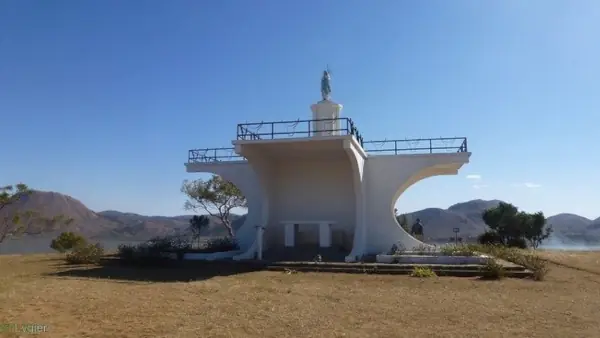17 December - The Lazarus in question is the brother of Martha and Mary of Bethany, a friend of Jesus whom He raised from the dead. He endured persecution for his faith in Christ. It is said that ten years after the ascension of the Lord, the Jews threw him, along with his sisters and other Christians, into a rowless boat.
The Jews thought that they would drown, but the waves, however, brought their boat to shore and they believed that it was the hand of the One who guided Noah's ark that guided their boat as well. They ran aground on the coast of Provence, where in Marseille they were welcomed, and Lazarus was acclaimed as a bishop. He was therefore the first bishop of Marseille. He sowed the seed of faith and worked there for thirty years, preaching the Gospel. Fearing the progress of his work of evangelisation, the pagans arrested Lazarus and brought him to justice. He was ordered to offer sacrifices to the idols, but he refused. He replied, "I am the servant of Jesus Christ, who raised me from the dead, and I know no other god but Him and His Father who created the universe". His flesh was torn apart with an iron comb and a glowing iron mass was thrown on his shoulders. He was made to lie on a burning grid and his chest was pierced with arrows before he was beheaded. It should be noted that Lazarus is the patron saint of the cities of Marseille, Autun, Avalon and Carcassonne.
Masindahy Jean de Matha
On June 23rd 1160, Jean de Matha was born in Faucon in Provence. His father, Euphème de Matha was a Spanish lord who had received the land of Faucon from the Count of Barcelona and Provence. In order to give him an instruction and education worthy of his rank, the family settled in Marseille where Jean began his studies. His mother, Marthe, taught him to know the poor and unhappy and to love them. She also takes him to hospitals and prisons. He continued his studies in Aix-en-Provence, then at the university in Paris where he took his doctorate in theology. He was encouraged to become a priest by the Bishop of Paris, who had noticed his worth and piety. When he celebrated his first mass on January 28, 1193, he saw a man in white with a red and blue cross on his chest, laying his hands on two prisoners, one white and one Moorish. The next day, as he withdrew into a forest to pray with a hermit, the two men witnessed the appearance of a deer carrying a cross between the antlers, which came to drink from a fountain beside them. John of Matha speaks of his vision of the prisoners to the Pope, who had the same vision: they interpret it as a call for the foundation of an order whose mission is to redeem the captives who were victims of the raids carried out by the Saracens on the Mediterranean coasts.
The Order of the Most Holy Trinity for the Redemption of the Captives was approved, together with its Rule, by Innocent III on 17 December 1198. The Trinitarians built a first monastery in Cerfroid, then Planels and Bourg-la-Reine were added: these were the three initial foundations. Thousands of Christians were thus redeemed from the Muslims of Morocco, Algeria and Tunisia, from whom they had become slaves. After the death of his hermit friend, who would be called Félix de Valois, Jean retired to Rome, where he died on 17 December 1213. He was buried on 21 December 1213 in the church of San Tommaso in Formis, from where his body was transferred to Spain. In 1665, Father Jean de la Conception presented a request to the Vicariate of Rome with arguments proving that John of Matha had been called a saint by several popes. On 31 July 1665, the Cardinal Vicar of Rome issued a decree establishing the cult granted to John of Matha from time immemorial, a sentence confirmed by the Sacred Congregation of Rites on 14 August 1666 and by Pope Alexander VII on 21 October. John's name was inserted in the Roman Martyrology on 27 January 1671 by a decree of Innocent XI. On 14 March 1694, the saint's feast day was extended to the universal Church. The relics of Saint John of Matha (thumb bone) are transferred from the church of Falcon to the church of the Trinitarians on 26th August 1674.








